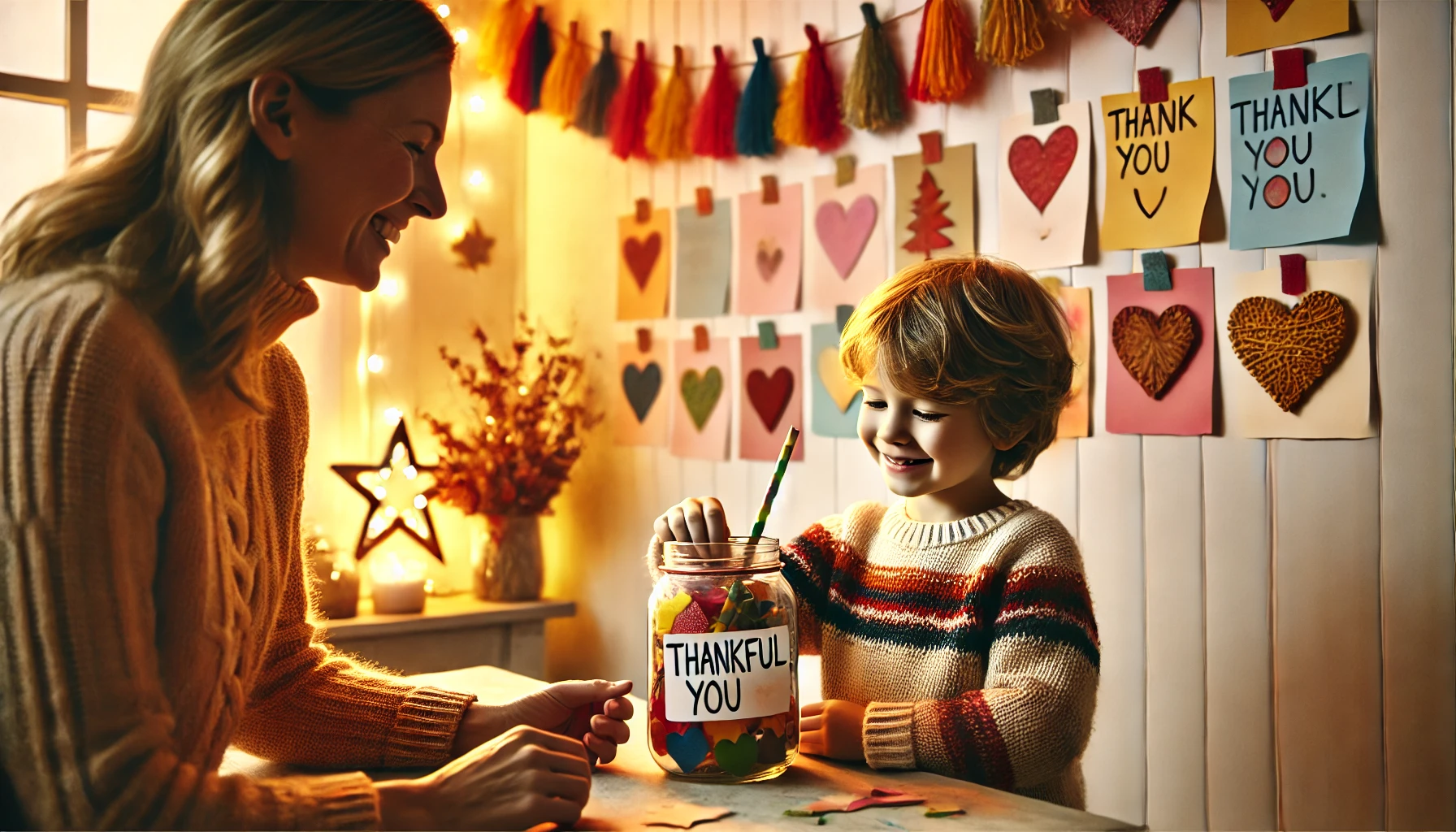How to Teach Young Children About Gratitude and Thankfulness
Gratitude is a powerful emotion that helps children develop a positive mindset, empathy, and deeper connections with others. Teaching young children to recognize and appreciate the good in their lives builds emotional resilience and happiness. Through simple routines, storytelling, and meaningful conversations, you can nurture a thankful heart from an early age.
Why Teaching Gratitude Matters
- Fosters empathy and kindness
- Encourages a positive outlook
- Promotes emotional well-being
- Strengthens relationships
- Builds appreciation for everyday moments
1. Explain Gratitude in Simple Words
Help kids understand the feeling.
Activity Idea:
Say: “Gratitude means feeling happy for the good things in your life.”
Use relatable examples: “Like when someone helps you, or you eat your favorite snack.”
Ask: “What are you thankful for today?”
What Kids Learn:
- The meaning of gratitude
- Emotional awareness
- How to express appreciation
2. Create a Daily Gratitude Ritual
Build it into your routine.
Activity Idea:
At dinner or bedtime, ask: “What made you smile today?”
Keep a “Thankful Jar” where children can drop in drawings or notes.
Use a calendar to write one thing each day they’re thankful for.
What Kids Learn:
- Consistency in practicing gratitude
- Reflection on positive moments
- Joy in sharing appreciation
3. Read Stories About Thankfulness
Books provide real-life examples.
Activity Idea:
Read stories like Bear Says Thanks by Karma Wilson or The Thankful Book by Todd Parr.
Discuss: “What was the character thankful for?”
Encourage them to draw a picture of something they’re thankful for too.
What Kids Learn:
- Connection to gratitude through storytelling
- Ideas for what to appreciate
- Emotional language for thankfulness
4. Say Thank You Often—and Mean It
Model gratitude in action.
Activity Idea:
Thank your child sincerely throughout the day: “Thank you for helping me pick up the toys.”
Encourage them to say thank you to others and notice how it feels.
Use role-play to practice polite and thankful responses.
What Kids Learn:
- Verbal expressions of gratitude
- Social skills and manners
- How appreciation builds connection
5. Create a Thank You Craft Together
Art helps express emotion.
Activity Idea:
Make cards or drawings to thank family members, teachers, or friends.
Hand-deliver or mail them together.
Talk about how kindness feels on both sides.
What Kids Learn:
- Creative ways to show thanks
- Thoughtfulness and generosity
- Connection through giving
6. Celebrate Acts of Gratitude
Positive feedback reinforces habits.
Activity Idea:
Use a “Gratitude Star” chart to track thankful behaviors.
Recognize moments: “I loved how you thanked your friend today.”
Make a gratitude wall with words, photos, or drawings.
What Kids Learn:
- Motivation to be grateful
- Reflection on their actions
- Sense of pride and joy
7. Encourage Thankfulness for Small Things
Teach that gratitude isn’t just for big moments.
Activity Idea:
Point out little joys: sunshine, hugs, a favorite book.
Say: “I’m thankful we had time to read together.”
Help them notice what makes them feel happy during the day.
What Kids Learn:
- Mindfulness in daily life
- Appreciation for simple pleasures
- Increased emotional awareness
8. Reflect on Feelings of Gratitude
Help them connect emotions to experiences.
Activity Idea:
Ask: “How did it feel when you said thank you?”
Talk about when someone thanked them.
Draw “gratitude faces” showing how thankfulness feels.
What Kids Learn:
- Emotional literacy
- Deeper self-understanding
- Positive memory recall
Final Thoughts
Teaching young children about gratitude and thankfulness nurtures joy, kindness, and connection. Through daily habits, open conversations, and creative expression, you help your child see the beauty in their life and in others. These early lessons help build a mindset of appreciation that will grow with them for years to come.
